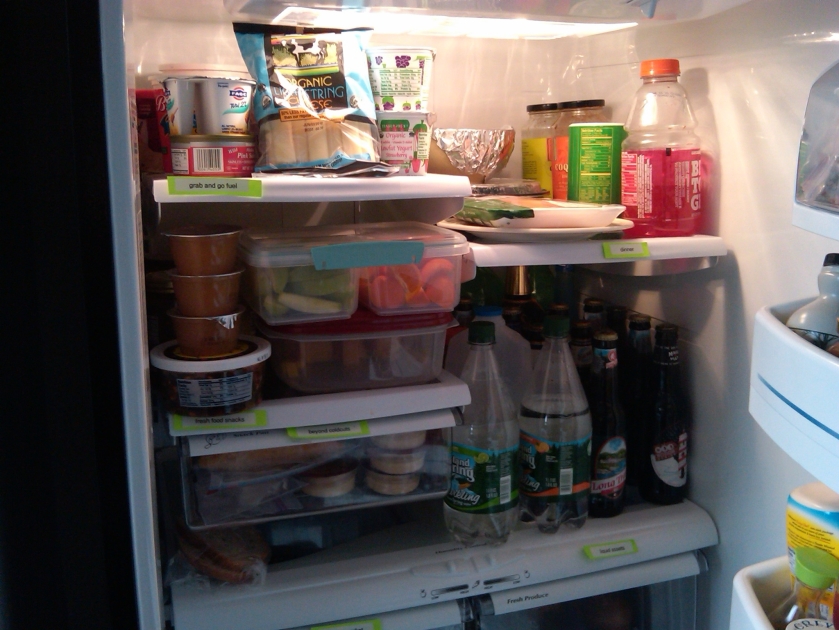I saw an article in Body and Soul Magazine earlier this year about how to make healthier choices when we grab food from the fridge. The idea is to put the healthiest choices right in your eye sight and make them as easy to ‘grab and go’ as possible. After the reading the article, I made some simple changes in our refrigerator. I have found myself eating healthier than I have in years and losing less fruit to rotting or being forgotten.
So here is my fridge:
The article suggested dividing the fridge into categories. Here is my interpretation and use of the categories:
- Dinner – This is my top right shelf. I use it for our dinner entrée type items and leftovers.
- Grab and Go Fuel – This is my top left shelf. I leave high protein (fuel) snacks like cheese sticks, yogurt and nuts.
- Fresh Food Snacks – This is the middle left shelf and is usually where we look first when we open the door. I have filled this with fresh-cut fruits and vegetables, salsa, and sauces (more on this later.)
- Beyond Deli – This is the middle drawer. It has additional cheese, deli and chocolate.
- Liquid Assets – We keep this full of cold beverages. As you can see there is a wide variety of beer which is not necessary for a healthy fridge! 🙂
- Green Market – These are the drawers at the bottom. They are full of additional fruits, vegetables and leafy greens.
So a little more on fresh food snacks:
The article suggested keeping fruit cut up so they are easy to grab and eat. I found I was buying fruit, which I love, putting it in the drawer and then tossing it later because it had rotted. I bought these great storage containers at Macy’s. They have a divider. It takes me 5 minutes to wash and cut fruit and put it into the container. My concerns was that washed cut fruit goes bad faster. I have found we eat the fruit before that is an issue. There is something so fun and pretty about ‘ready-made’ cut fruit. Cut your produce, fruits and veges, into bite size pieces and store them right at eye level. For kids, put the cut fruit, in an easy to see, easy to reach spot in the fridge.
There is nothing wrong with taking a little help from the store and splurging when it comes to fruit! Trader Joe’s has pre-cut apples (green and red.) They have found a way to keep them from turning brown. It costs more than purchasing the apples yourself and cutting them however I find it a simple, healthy treat that really saves time! Consider skipping a $2-5.00 coffee and use the money for a few healthy treats instead.
© 2010 All rights reserved.




